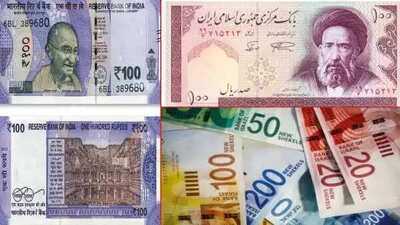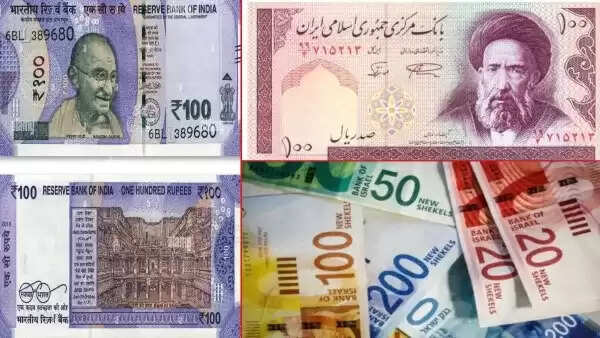

Indian Rupee Power: Is Your ₹100 More Valuable in Iran or Israel? Here’s What the Exchange Rates Say
As geopolitical tensions between Iran and Israel begin to ease following weeks of missile strikes and drone attacks, sparked global attention has now shifted to the possible impacts of the conflict. Amidst ceasefire talks reportedly initiated by former U.S. President Donald Trump, global markets have been volatile—and so has the value of national currencies.
This leads to an interesting question: How powerful is the Indian Rupee (INR) in both these countries? With international travel picking up and the Middle East back on travelers' radar, understanding how much your money is worth abroad becomes vital, especially for budget-conscious Indians.
Indian Rupee in Israel: Significantly WeakIf you’re planning to travel to Israel, you may need to be prepared to stretch your wallet. The official currency of Israel is the Israeli New Shekel (ILS), and it holds a much stronger position against the Indian Rupee.
Current exchange rate: ₹1 = 0.0406 New Shekel
That means ₹100 will get you only 4.06 ILS, and ₹1,000 will convert to just 40.63 ILS
Given Israel’s relatively high cost of living, these figures suggest that expenses like hotel stays, meals, and transportation can quickly become expensive for Indian tourists. Even basic amenities might require higher spending compared to Indian prices.
Indian Rupee in Iran: Surprisingly StrongOn the other hand, the Indian Rupee holds remarkable purchasing power in Iran. The Iranian currency is the Rial (IRR), and due to prolonged economic challenges and sanctions, the rial has depreciated significantly over the years.
Current exchange rate: ₹1 = 488.10 Iranian Rials
₹100 will give you 48,810 IRR, and ₹1,000 equals a whopping 488,100 IRR
This stark contrast means that for Indian travelers, Iran can be an extremely budget-friendly destination. Whether it’s food, lodging, local transport, or shopping, expenses are likely to be a fraction of what they’d be in Israel or even in India. For budget-conscious tourists or backpackers, Iran offers excellent value for money without compromising on culture or history.
Quick Comparison at a Glance:| Iran | 48,810 Rials | 4,88,100 Rials |
| Israel | 4.06 Shekels | 40.63 Shekels |
From this table, it’s clear that the Indian Rupee is significantly stronger in Iran than in Israel.
Why This Matters for Travelers and InvestorsUnderstanding currency strength is not just important for international tourists. It also affects investment decisions, import-export margins, and foreign policy assessments. A weak rupee in Israel could indicate stronger economic control and higher costs of living, while a strong rupee in Iran may be the result of long-standing inflation and sanctions impacting the local economy.
For Indian companies with global operations, particularly in oil, defense, and manufacturing sectors, such currency disparities can lead to changes in trade patterns, supplier relationships, and pricing strategies.
Political Stability Could Shift the BalanceThe recent military escalations between Iran and Israel had raised fears of a wider regional conflict. Both nations engaged in aerial strikes and retaliatory attacks, leading to loss of lives and infrastructure damage. However, diplomatic efforts have brought some relief, with signs pointing toward a potential ceasefire. If this truce holds, both currencies could see further volatility—or stabilization—depending on future diplomatic developments.
Key Takeaways:
Indian Rupee is much weaker in Israel and significantly stronger in Iran.
₹100 equals only 4.06 ILS in Israel but 48,810 IRR in Iran.
Iran may offer better value for Indian travelers looking for low-cost international destinations.
Political tensions and currency fluctuations go hand-in-hand; future changes could shift the economic landscape.
So if you're planning a trip to the Middle East or simply curious about where your money travels further, Iran might just be the destination where your ₹100 becomes a fortune—at least in local currency terms.